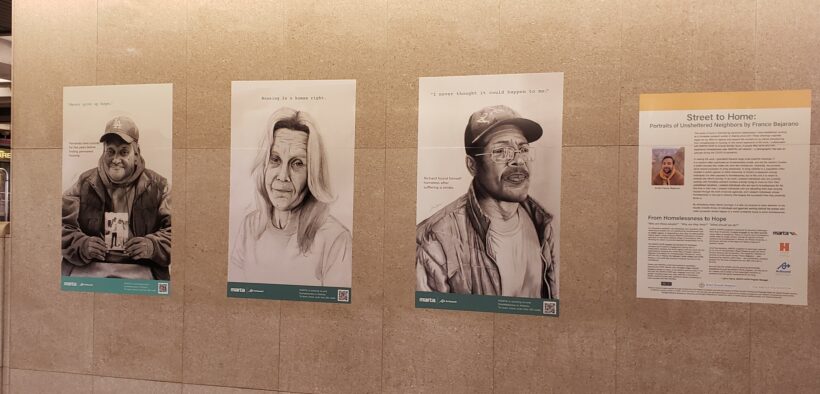Atlanta artist and social worker Franco Bejarano’s portraits capture something commonly in sight, but rarely truly seen. His life-size drawings of Atlantans experiencing homelessness bring attention to the individuality, abilities, and ongoing journeys of these members of the community. Bejarano also works to house homeless clients, contributes to art therapy programs working with the homeless, and has a passion for mental health advocacy. During the pandemic, his talent was tapped for a public art project on homelessness organized by MARTA and HOPE (Homeless Outreach and Proactive Engagement) Atlanta. The result is “Street to Home,” an installation of his portraits which is now on view at MARTA’s Five Points Station. Bejarano joined “City Lights” host Lois Reitzes via Zoom to discuss his work in homeless outreach, and how he puts his artistic energy to use improving lives in Atlanta.
“From a very young age, I knew that I wanted to be an artist… and then, when the time actually came to choose a major in college, I was hit with the reality that I come from a working-class immigrant family, where being an artist is not really a wise career choice,” said Bejarano. “At the same time, I was going through this existential crisis, looking for meaning. I knew I had the technical skills to make beautiful things, but why? I didn’t want to make art for the sake of making art.”
Bejarano instead went to school for clinical social work, focusing on community psychotherapy, which he calls his “true passion.”
He completed grad school and started working for Atlanta non-profit Intown Collaborative Ministries in a homeless outreach program. Through his work, Bejarano happened upon the opportunity to combine his passions and bring art back into the picture.
“I remember one day, I was housing one of my clients. He had been homeless, sleeping outside for 10 years… and here he was, moving in, just like any regular day, and no one was around to see it,” said Bejarano. “That’s when I realized, like, ‘Wow, this moment is quite monumental. People need to see this…’ So I thought, how can I commemorate this person’s story of resiliency and perseverance in a way that is dignifying? And so I said, I have some time, why not do a portrait? Why not do a life-size portrait?”






